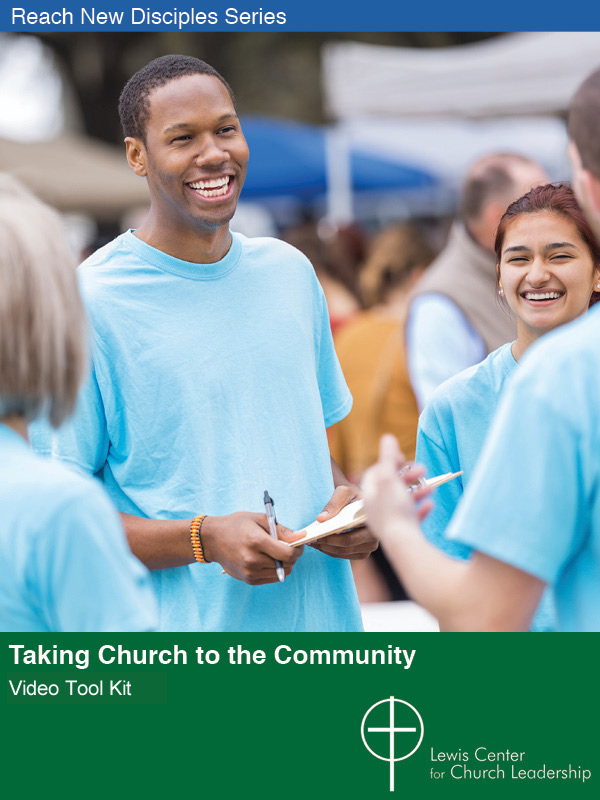Tim Snyder of the Lewis Center staff reveals how common myths that diminish the legitimacy of digital worship are not borne out in research or practice. Digital worship can be as real, as embodied, and as communal as the types of worship with which we are more familiar.
What comes to mind when you think about digital worship? A few persistent myths have long shaped attitudes regarding the legitimacy of worship in the digital sphere. Yet these common myths are not borne out in the work of researchers who have studied online religious communities for decades nor in the experience of so many Christians who have worshipped online since the onset of coronavirus. As more and more churches are embracing the potential of digital worship, we need to set aside these common misperceptions.
Myth #1. Digital worship is not real worship.
Many people refer to worship in the digital sphere as “virtual worship.” But the term “virtual” can be confusing because it has two very different meanings. Virtual can mean “almost like” something, but not completely. For example, we might say of a close friend, “They are virtually family.” Or we might say something is “virtually impossible.” But virtual can also mean something that is computer or software generated. For example, there are virtual environments and virtual choirs.
When the term virtual is used in relation to worship, it is intended to convey the second meaning, that it’s the kind of worship made possible by software. But people have conflated the two meanings and take it to mean that virtual worship is almost like worship, but not completely. It’s not real worship.
There is a common assumption that what happens in digital contexts is somehow unreal, while things that happen in person are really real. Social media theorist Nathan Jurgenson calls someone who hold this view a digital dualist. Digital dualists will say that anything online is not real or authentic; in person is. But given the developments of the last two decades, this is a distinction that’s hard to maintain. For many, if not most, of us today, our daily living is no longer divided by practices that are either online or offline. They’re both. We live in what Yale liturgical scholar Teresa Berger calls “digitally suffused lives.”
Theologically, worship is most basically about a relationship between God and God’s people. All our lives are lived as worship before God. Worship happens whenever God’s people turn to God in prayer, in lament, in grief, in thanksgiving, in praise. However and whenever God’s people turn to God, God shows up. Digital contexts may indeed have their limits, but God is not particularly challenged by limitations we’ve created. If God knows what’s in our heart of hearts, if God knows what we need before we even express it, I suspect God can probably figure out Facebook or text messaging.
Myth #2. Digital worship is disembodied.
For Christians, bodies are really important. Just think of how often bodies and physical proximity come up in Jesus’ ministry. There is the woman whose bleeding can’t be stopped. Who can forget the blind man in John’s Gospel and how Jesus spits on the mud and rubs it over the man’s eyes? And, of course, Lazarus, who already was starting to smell when Jesus raises him from the dead.
It’s not surprising that during a time of social distancing, Christians yearn to be closer to each other. We yearn for the familiar forms of our embodied faith. And along with that, there’s this idea that digital worship is disembodied. But the reality is that if you look more broadly at the full range of Christian practices happening online, you’ll find they are surprisingly embodied. Many apps, for example. invite people of faith to pay attention to their breathing. Clicks, swipes, and other bodily gestures are often incorporated into prayer practices. One of my favorite apps facilitates the Liturgy of the Hours. It even includes communal singing so that when you’re invited to sing along it doesn’t feel quite as alone as it otherwise would. So, the question is not really whether or not we use our bodies to practice our faith online. The question is: how are we invited to use our bodies?
Some congregations are very good at inviting digital worshipers to engage in bodily and material practices. But most aren’t. Most digital worship just simply hasn’t invited participants to attend to their bodies. No invitations to stand or sit or breathe deeply or raise one’s hands. No invitation to reach out and shake someone’s hand or hug a loved one. No invitation to click links or interact with the screen itself. It’s been mostly passive by design. And so one of the very best things you can do to improve your digital worship is to think through each part and ask yourself how your participants might be experiencing it. Is this a passive experience or an active one? See if you can’t come up with an invitation to actually do something — anything!
Myth #3. Digital worship is individualistic.
When I talk to pastors about digital worship the number one concern is that it makes worship a little too convenient. It’s a concern that is grounded in the myth that digital worship appears to be individualistic. It appears that digital worship is something we do all by ourselves, whenever and wherever we like. If this were the case, you could certainly understand why pastors are sounding the alarm.
The problem is, as we all know, things aren’t always how they appear. There is often much more going on in digital contexts than it first appears. When it comes to digital worship, many families are worshiping together. And it’s anything but convenient. Just ask a family with young children! And while social practices in a digital context certainly look a lot different than some in-person ones, they are nonetheless social. They invite real, authentic connections with God and other people of faith.
Worship in a digital context may require translation. Digital culture brings with it unique ways of behaving, thinking, communicating, creating, and more. But here’s the good news. There’s a long history within Christianity of worship taking root in new cultures and becoming creative and innovative forms of Christian practice.
Online churches have existed long before the pandemic, and research shows that these communities share many, if not all, of the most important features of in-person communities. Often, they reach people who otherwise would never attend another church. The most important questions digital worship raises are the very same basic questions one would ask of any worship experience. Are people invited to be fully present, present to themselves, to others, and to God? And are they invited to participate actively in a community at worship? By these measures, digital worship can be as real, as embodied, and as communal as the types of worship with which we are more familiar.
This article is derived from Participation and Presence: Leading Meaningful Digital Worship, a free online webinar presented by Dr. Tim Snyder through the Lewis Center for Church Leadership on March 23, 2021.
Related Resources
- 5 Dos and Don’ts to Make the Most of Your Digital Worship by Tim Snyder
- What Approach to Digital Worship is Best for Your Church? by Tim Snyder
- 3 Strategies for Doing Church Online by Heidi A. Campbell







